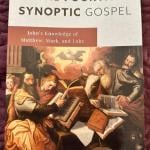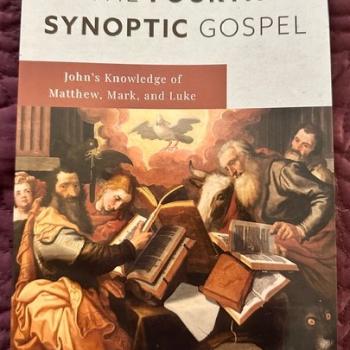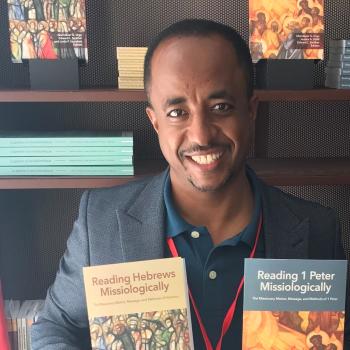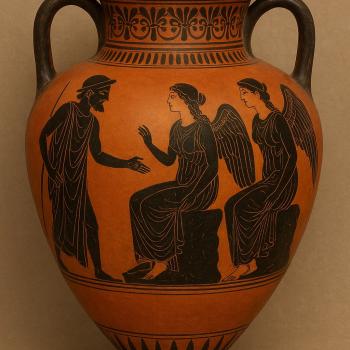Which Bible should you read? What is the key to selecting a good Bible version? If you are new at Bible reading, you might be wondering such questions. As a Bible translator, here are my suggestions.
Selecting a Good Bible Version
If this is the first time you will be making a concentrated effort to read the Bible, perhaps the best translation would be one that is considered a dynamic equivalence version. Such versions include:
- Common English Bible (CEB)
- Today’s New International Version (tNIV)
- New International Version (NIV)
- International Standard Version (ISV)
If I had to choose one for the beginner, I would pick the CEB. The word choices are intended to be readable for non-specialists. I know this for a fact because I was on the one of the translation teams for the CEB (and also for the NRSVue).
In a word, the reason to start with a dynamic equivalence version is because they are easy to read. At the same time, they attempt to stay relatively close to the original sense of the original languages of the Bible.

Three Types of Bible Versions
Altogether, there are three general types of translations: literal, paraphrase, and dynamic equivalence.
Literal Versions
These versions attempt to keep more or less the original sense of the biblical languages. This is a good thing, but for beginners, such translations might be a little more challenging to understand because of the vocabulary they use. These translations include, for example:
- New American Standard Bible (NASB)
- English Standard Version (ESV)
- Christian Standard Bible (CSB)
- Holman Christian Standard Bible (HCSB)
- Lexham English Bible (LEB)
- Revised Standard Bible (RSV)
- King James Version (KJV)
- New King James Version (NKJV)
Among these, I like the NASB the most. The version I do not recommend is the King James Version. It was great for its time, but that was back in 1611! Not only is the Old English in it not easy to understand for many people, but it was translated from inferior manuscripts of the original languages. We have discovered older Greek and Hebrew texts since 1611. The recently discovered texts go back to the time of Jesus and earlier (for Hebrew texts such as found among the Dead Sea Scrolls), and as far back as the second century for the Greek New Testament texts. Although the NKJV updates the English, it did not fully update the manuscripts its predecessor relied on.
On the border between a literal and a dynamic equivalence version are these translations:
- New Revised Standard Version (NRSV)
- New Revised Standard Version updated edition (NRSVue)
- New English Translation (NET).
The NET version also contains notes that provide the rationale for the word and phrase translations made. It is the scholar’s choice among these options, but these notes would tend to be too difficult for the beginner. The NRSV and NRSVue versions are inclusive in language, as are the CEB and tNIV for dynamic equivalence.
For students of the Bible with experience in reading the Scriptures, I would recommend one of the literal translations (but not KJV or NKJV as the first choice). If you are a beginner, I would recommend the dynamic equivalence versions instead.
I will make one exception to the rule, however. If you purchase a study Bible, such as The ESV Study Bible or the New Oxford Annotated Bible (NRSV), I could recommend the beginner using a more literal translation. On the other hand, some solidly dynamic equivalence versions also have study Bible editions, too. The NIV Study Bible, for example, has been a favorite pick for years. There is also a tNIV Study Bible, Common English Study Bible, and Wesley Study Bible that uses the CEB version. There are other study Bibles, too. These are just a few.
Paraphrase Versions
These versions are freer attempts to translate the biblical languages into the jargon that we currently use. The problem with these versions is that they may often not correspond well with the Hebrew and Greek versions. For example, Psalm 119:105 in one such paraphrase reads as follows: “Your words are a flashlight to light the path ahead of me and keep me from stumbling” (LB). The problem should be obvious—flashlights had not yet been invented when the Psalmist wrote this verse a few thousand years ago! More literal translation would use the word “lamp” instead. Paraphrase versions include, for example:
- Living Bible (LB/TLB)
- New Living Translation (TLT)
- The Message (MSG),
- Good New Bible (GNB)
On the borderline between a dynamic equivalence version and a paraphrase is the New Century Version (NCV).
I do not recommend these versions as your primary Bible. With their contemporary use of language, they are too far removed from the original languages. The only way I would recommend these are as secondary versions, not your primary Bible to read on a regular basis.
Dynamic Equivalence Versions
These versions stand in the middle between literal and paraphrase versions. They attempt to ride the balance of remaining close to the original languages, while at the same time they attempt to be understood through equivalent language of today’s English. These are the versions I listed earlier, such as the Common English Bible (CEB), Today’s New International Version (tNIV), New International Version (NIV), and International Standard Version (ISV)
There are many other English translations of the Bible. I simply listed some of the better-known versions. I would start with one of these versions. Later on, if you run across a version not listed above, read what you can about it first to find out more information about it. Bible Gateway is a good resource for comparing Bible versions. For general information about the Bible and how to interpret it, I recommend Gordon Fee and Douglas Stuart’s book, How to Read the Bible for All Its Worth (4th ed).
Where can I get a Bible?
You can purchase a Bible almost anywhere. A local bookstore should carry a selection, such as Barnes & Noble, and so would online sites such as amazon.com. If you would like a free Bible, you might want to check out a local Bible-believing church. If you are new to their church and request one, they might be willing to give you a free one. Or, ask a Christian friend or neighbor if you could borrow one from them.
If you like to do your reading on a computer, laptop, or phone, I would recommend getting your Bible from Logos software. Worse-case scenario if you are really struggling financially—simply read the Bible online on websites such as Bible Gateway or Bible Hub. I would recommend starting with Matthew ch. 1 or John ch. 1.
Some beginning facts about the Bible that you should know:
- The Bible consists of two testaments—the Old and the New Testament.
- The Old Testament is considered the scriptures of the Hebrews who later became Israelites and then the Jewish people.
- The New Testament is considered the scriptures of Christians, regardless of whether one is Catholic, Protestant, Eastern Orthodox, or any others that believes in Jesus Christ as their Lord and savior.
- The Old Testament was originally written in the Hebrew language with some sections in Aramaic. There is also a very old translation of the Old Testament in Greek called the Septuagint or LXX. New Testament authors generally seem to be aware of this translation.
- The New Testament was originally written in Greek.
- Christians today consider both Old and New Testaments to be inspired by God. The Bible is authoritative for belief and practice.
- Christians read both testaments through the lens of Jesus Christ. In other words, the identity, life, teachings, death, and resurrection of Jesus are central to the way they follow Scripture. They see Jesus as fulfilling Old Testament prophecies—he is the right way to God.
- The Old Testament consists of 39 books (assuming the Jewish canon). An easy way to remember this is to count the letters of “Old Testament”. That is, count each letter in the word OLD (3 letters) and TESTAMENT (9 letters), then join together the two results = 39.
- The New Testament consists of 27 books. An easy way to remember this is again to count the letters of “New Testament”. That is, count each letter, this time of the word NEW (3 letters) and TESTAMENT (9 letters). But instead of joining together the results, this time multiply them: 3 x 9 = 27. (I learned these number tips as a layperson many, many years ago through Bruce Wilkinson’s Walk Thru the Bible seminar).
Other questions you might have as a beginner are these: how do I go about reading the Bible? Stay tuned….













